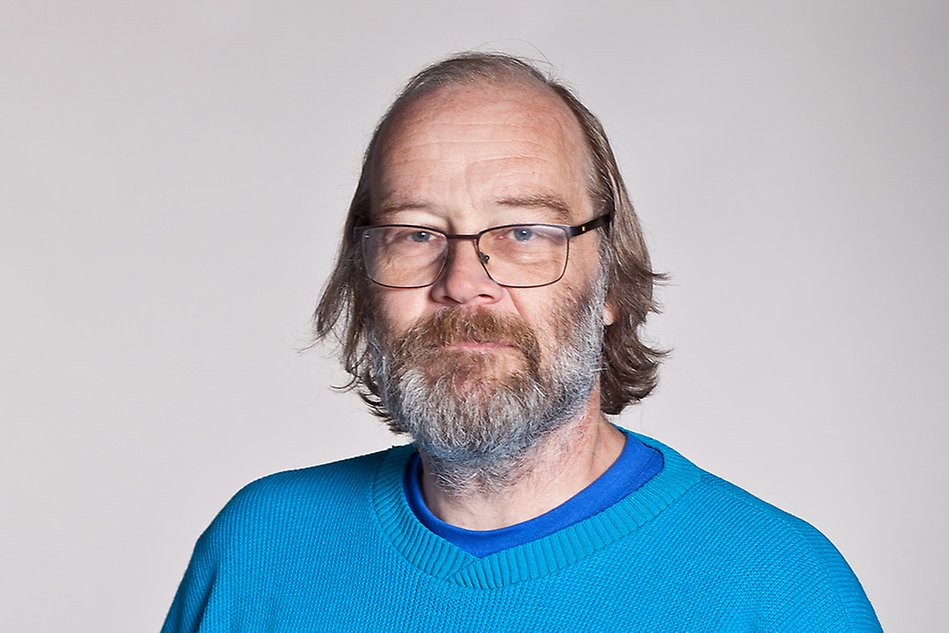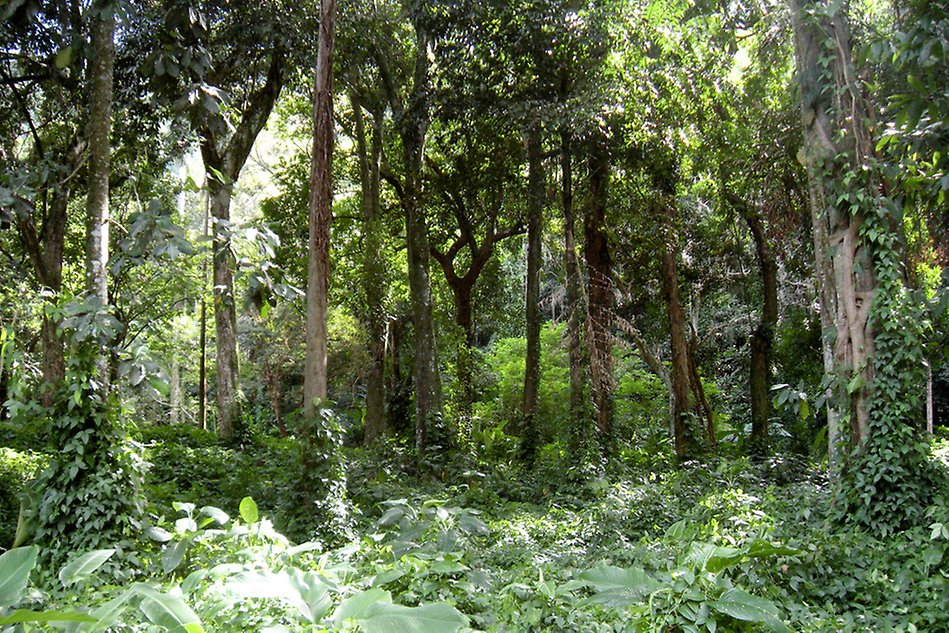Biodiversity essential for the smart city
What would you like the city of the future to look like? Do you dream of a world of greenery that sprouts with life? Do you want tomorrow’s children to experience blooming meadows, clean seas and fresh air? If so, biodiversity is a necessity – and one way of preserving biodiversity can be by studying something as small as dragonflies.
”We can talk about smart cities all we like, but if a city is not sustainable, it’s not smart. Without biological variation, nature does not work, and then life does not go on as we are accustomed to.”
Göran Sahlén
Göran Sahlén became spellbound with dragonflies back when he was 13 years old. At the time, it was the mystique of the little creatures that attracted him. Today he is an Associate Professor of Biology, using what he has learned about dragonflies to find universal answers to ecological issues.
“When I was little, I collected butterflies – and one day I happened to encounter a dragonfly. I didn’t know what it was, but I thought it looked interesting. When I tried to look it up in my identification literature, I ran into a problem. It wasn’t in there! It was then and there that my interest took form. I started investigating further to find answers to what kind of insect I had found, and in literature from the early 20th century, I found the answer. After that I was hooked”, he says with a laugh and continues:
“It may sound very niche, and sure it is to some extent, but dragonflies can say a lot about the biosphere in general. One of my goals is to find out what laws govern which different species live together and what factors are necessary to create a rich species community.”

Dragonflies can serve as a measure of the richness of species in a habitat.
Systematic charting paves the way for conservation work
Dragonflies lay their eggs in and around bodies of water. The larvae live in water, while the adult dragonflies fly. To be able to follow their development for a longer period of time, Göran Sahlén usually works with larvae:
“To create a picture of the larval habitat I study the bodies of water where they live. The type of water is affected by numerous factors, each of which changes the properties of the water and affects how rich in species a body of water has the potential to be. This may include the availability of food, the vegetation and its depth. Temperature is also a significant factor. Dragonflies are poikilothermic and grow with warmth. Therefore, they benefit from warm temperatures. The heat accelerates their growth, which gives them an advantage. In the insect world, it’s very useful to get big quickly.”
Dragonflies can serve as a measure of the richness of species in a habitat as they are the predators that are highest in the food chain of lakes – with the exception of fish – and a large number of dragonflies indicate a species-rich body of water. By systematically identifying not only how many individuals of a particular species live in a location, but also how many different species and which of the various species are gathered in and around a specific watercourse, Göran Sahlén draws conclusions about the overall species-richness of the water.
“All species that are below the dragonflies in the food chain, such as herbivores and various decomposer organisms, are regulated by the number of dragonflies. The presence of a large number of dragonflies indicates that the water is rich in food. From this we can conclude that the lake as a whole is rich in diversity. If instead the number of dragonflies is low, we can suspect that the lake is species-poor. In this way we can apply what we learn from the efforts to systematically identify the presence of dragonflies to other aquatic organisms, and from that we can work with nature conservation.”

Göran Sahlén has worked at Halmstad University for over 20 years.
Swedish and Brazilian dragonflies raise the same questions
Dragonflies are a tropical group of organisms that have developed adaptations so as to also be able to live on northern latitudes. Even though we find dragonflies in Swedish waters, the great diversity of species is found on more southern latitudes. Therefore, Göran Sahlén performs a large part of his research activities in Brazil, in collaboration with Professor Eduardo Périco and his research team at Universidade do Vale do Taquari (UNIVATES).
“The research questions are identical, whether I study Swedish or Brazilian dragonflies. In Brazil we work in two different environments: partly in a type of rainforest called Atlantic Forest and partly on the large grasslands, for example Pampas”, Göran Sahlén says.
The Atlantic Forest, which extends along the Atlantic coast of Brazil, is one of the world’s richest ecosystems, but today only a few percent of it remains. The rest has been deforested to make room for grazing animals or for the cultivation of crops, for instance sugar canes.
“When imagining a rainforest, we usually think about the tropics, where it rains daily and where there is a mass of flowering trees and other plants, but that is not representative for the Atlantic Forest. Here the vegetation is instead mixed with conifers and there are distinct seasons. Summers are dry and winters are cold. It’s very different from how we often imagine the rainforest”, says Göran Sahlén, comparing the Atlantic Forest to the more famous Amazon rainforest:
“The biodiversity of the Amazon and how it is threatened by fires and deforestation is common knowledge, but the Atlantic Forest is not as well known, despite the fact that it holds many more species than the Amazon.”

The Atlantic Forest, which extends along the Atlantic coast of Brazil, is one of the world’s richest ecosystems, but today only a few percent of it remains.
Changed biotopes and water shortage threatens biodiversity
Biodiversity on the grasslands is also under threat. While the Atlantic Forest is being deforested, trees are being planted on the plains. With the goal of being able to harvest the planted forest as quickly as possible and thus attain as much yield as possible, fast-growing tree varieties, such as eucalyptus, are chosen.
“Instead of letting the grass plains be just plains, we see that crops, often trees, are planted on them. By doing so an open field biotope is transformed into a forest, which is harmful to biodiversity. Species – both plants and animals – that need a lot of sun cannot cope with such changes. A species can be either a generalist species or a specialist species. If one is a generalist, it can do most things. It adapts. But if one is a specialist, it is dependent on a specific factor and if that changes things go awry. Then the possibility of surviving is nil. But of course, there’s a whole range of species in between the two extremes. Some species are able to adapt and survive just fine while others do less well and disappear entirely”, explains Göran Sahlén and continues:
“Access to freshwater is also a limiting resource, for dragonflies and for all life, including humans. In recent summers we have experienced water shortages in many places, even in Sweden where we ordinarily have good access to water. This concerns the groundwater – the part of the water’s natural cycle that takes place underground. Surface water – the water found on the Earth’s surface in the form of lakes, streams, wetlands and seas – we haven’t seen a shortage of, and therefore the drought has not negatively affected the dragonflies. Elsewhere in the world, things look significantly different. Down by the Mediterranean Sea, for example, much of the surface water is used for irrigation of crops, making it difficult for aquatic organisms to survive. We must learn to use water in a smarter way, so that the environment is not harmed by the development of society.”
”There is no getting away from the fact that having fun is an important component in all research. I’m not doing this because I have to, but rather because I think it’s fun and interesting.”
Göran Sahlén
Research for business and pleasure
When Göran Sahlén started his undergraduate studies, the choice of subject was a given –biology! His interest in dragonflies led him into the academic world and has since then kept him there.
“In my doctoral dissertation I examined ultrastructures in the eggshells of dragonflies. The eggs are very small, about half a millimetre in diameter, so it takes extreme magnification to be able to study them. I looked at the shells in cross-sections and examined their structure”, he explains.
After receiving his PhD, he applied for funding for a project concerning dragonflies, as part of the biodiversity initiative that the Swedish Environmental Protection Agency was promoting at the time. He was fortunate to receive the funding, and the rest is, as they say, history. It was about twenty years ago that he embarked on an academic career at Halmstad University.
“I really enjoy my work. I like the mix between teaching and research and wouldn’t want to be without any of it. The only thing I would like to not have do is administration and paperwork”, he says with a big laugh.
Biodiversity is regarded by many as one of the most important issues of our time. In its global sustainable development goals, the UN states that biodiversity is the foundation of life on earth, something Göran Sahlén agrees with:
“We can talk about smart cities all we like, but if a city is not sustainable, it’s not smart. Without biological variation, nature does not work, and then life does not go on as we are accustomed to.”
Göran Sahlén is not only motivated by the chance to make a difference and to contribute to a sustainable future, but also by having a good time:
“There is no getting away from the fact that having fun is an important component in all research. I’m not doing this because I have to, but rather because I think it’s fun and interesting. I’m constantly learning new things and not everyone can say that after so many years in the same profession. Being actively engaged in research never gets boring.”
Text: Christa Amnell
Photos: Istock and Magnus Karlsson

